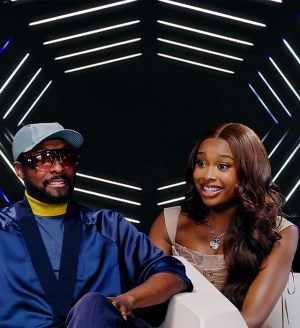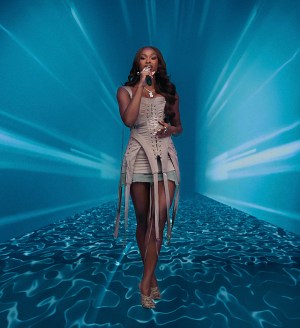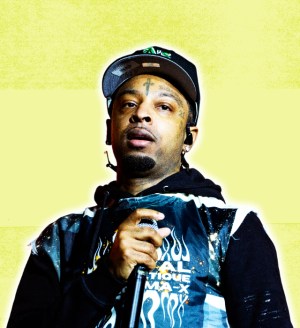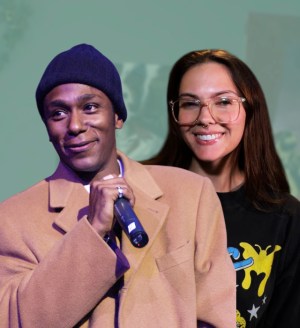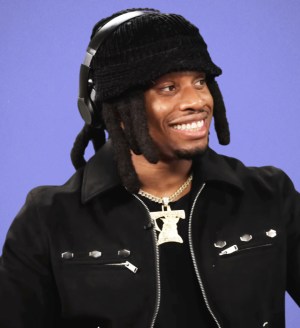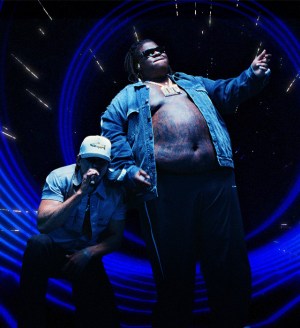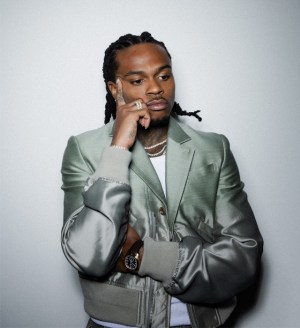Music + Culture
SHOWS
Covers Books
EVENTS
FEATURED
BRANDS
TRAVEL,
DRINKS & EATS
DRINKS & EATS
Latest
The Best Movies Of 2025
Presents, food, friends, and family are what this next stretch of the calendar is all about. But for those hours in-between having to go out and turn on, the best films from 2025 are here for you, most of them available to stream, but a few calling you to the theater for buttery popcorn and the less damaging kind of holiday season drama. While you may have seen a lot of these films throughout the year, we tip our cap if you've seen everything here. If you haven't, though, consider this one last holiday season to-do list. Encapsulating an on-screen…
Fred Again.. Creates A Banger In 13 Minutes And Discusses Productivity In Instagram’s Latest ‘Ask It Anyway’ Video
Few people have been as busy as Fred Again.. lately. In September, he started a rollout of new songs for his ever-evolving USB project, releasing fresh tracks and delivering high-energy live shows on a weekly basis. Even when the initial run finished, Fred went ahead and announced another one, set for early 2026. Even amid all that, he still found an hour to sit down with Instagram for a recent episode of their new long-form interview series "Ask It Anyway." It launched with Tyler, The Creator earlier this year and now Fred is the second-ever guest. In a chat hosted…
Hotels We Love: Caribbean Cool, Champagne Views, And Endless Turquoise at Grace Bay Club
Turks and Caicos is the #1 private destination in the Caribbean, which says a lot about the destination and the luxury you can experience there. The Turks and Caicos Islands have set aside dozens of protected areas including National Parks, nature reserves, sanctuaries and various historical sites, making it one of the most unique vacation spots in all of the Caribbean. If paradise had an address, it would be Grace Bay Club in Turks and Caicos. This oceanfront escape is where barefoot luxury meets impeccable service, with powder-soft sand and water so clear it feels unreal. From chilled welcome cocktails…
ASAP Rocky Wants To ‘Make Being A Dad Cool Again,’ Tim Burton Says
It has been a long, long, long road to ASAP Rocky's upcoming album Don't Be Dumb. In 2022, he said the project was finished. In July 2023, he indicated it'd be out soon. It was later given a summer 2024 release date before getting pushed back to the fall. Towards the end of 2024, it was given an approximate release window of early 2025. That brings us to late 2025 and the album is still not out yet. Finally, though, it appears it'll be here soon. Last week, Rocky took to Instagram to reveal the cover art, created by Tim…
SNX: This Week’s Best Sneakers, Featuring The Jordan 8 “Bugs Bunny,” What The? Book 1 & More!
Welcome to SNX DLX, your weekly roundup of the best sneakers to hit the internet. It looks like this sneaker year just doesn’t want to quit. Not only is this a pretty strong week, next week is even better, which leads us to wonder — where the hell was this energy during the summer? Why did the big brands decide to wait until the last few weeks of the year to bring the heat? Don’t they know we’ve already spent all our holiday money? We have so many questions! By now we have to assume your holiday shopping is done,…
Uproxx’s Joypocalypse Breaks Down Why Minor Threat’s Directness Made Them DIY Hardcore Heroes
Minor Threat were active for a mere three years in the 1980s, and yet, in that short window, they had an indelible influence on hardcore music. The band's Out Of Step and self-titled EPs are considered landmark works in the genre, and the group's song "Straight Edge" was even part of the inspiration for the "straight edge" movement that promotes refraining from drugs, alcohol, and other vices. As Uproxx's Joypocalypse explains in a new video, the band also set the foundation for the DIY aspects of the hardcare genre. https://www.instagram.com/p/DSa2Ac1knbR/ She says: "Hardcore through the lens of Minor Threat: fast,…
Kali Uchis Responds To High Demand By Releasing ‘Muévelo,’ A Leak That Became A Fan Favorite
With just days left until Christmas, we're officially in the annual dry season of new music releases. For the most part, artists are taking the last few weeks of the year off, laying low and relaxing. Kali Uchis had one more thing to say before bidding farewell to 2025, though, as today (December 19), she shared "Muévelo." The song is actually a fan favorite. It stems from the Orquídeas era and fans first heard it as a leak, but recently, there have been calls on social media for Uchis to officially share the full track. Uchis listened and here we…
SZA And Kendrick Lamar Had A Surprise Reunion At TDE’s Christmas Concert
Kendrick Lamar and SZA spent a lot of time together this year on the Grand National Tour, with SZA co-headlining the North American and European shows, while Kendrick then handled a handful of South American and Australian concerts himself. The two just couldn't end the year without getting together one more time, though. Top Dawg Entertainment hosted the 12th Annual Christmas Concert in Los Angeles last night (December 18), and while Kendrick is no longer with TDE, he still has love for his former label: He made a surprise appearance at the event. At one point, he joined SZA on…
Indiecast Hands Out The Yearly Indiecasties Awards
Steven and Ian begin with a quick Sportscast about the disastrous turn for Steven's beloved Green Bay Packers. They also do some clarifications on last week's year-end albums lists. After that, they discuss the future of the show and reveal that there won't be any new episodes for the foreseeable future. Finally, they commence with the annual awarding of the Indiecasties. Listen to Episode 270 here and subscribe wherever you get your podcasts. You can submit questions for Steve and Ian at indiecastmailbag@gmail.com, and make sure to follow us on Instagram and X (formerly Twitter) for all the latest news.…
Shaboozey, Ludacris, And Cortis Are Headlining A Series Of 2026 NBA All-Star Weekend Concerts
It might seem a little early to start thinking about the NBA All-Star game, but actually, voting just opened on December 17. While we wait to see which players will be participating in 2026, the NBA is already starting to reveal what All-Star Weekend is going to look like. Today (December 18), the league announced that Shaboozey, Ludacris, and Cortis will headline the league’s NBA Crossover concert series. The shows are going down at the Los Angeles Convention Center from February 12 to 14. Cortis said in a statement, "It’s a huge moment for us to be the first K-pop…
The Best TV Shows Of 2025
Best-of lists are inherently relative -- we all have our tastes, and we’re sticking to them -- but 2025’s TV felt unusually communal. We were all watching The White Lotus and altering our pronounciation of the word "Lorazepam" just a few months ago, piecing together the mind-bending mysteries of Severance, and desperately googling medical terms to keep up with the relentless life-saving measures of The Pitt. Even as the year kept throwing us curveballs, these shows created a kind of shared experience, a fleeting sense that maybe we were all in this bizarre, screen-addled world together. (It's funny how simply…
Our Splurge Gift Guide Will Round Out Your Seasonal Shopping
You got the gifts for the home, you got the style gifts, but you've waited until eight days before Christmas to figure out your “big swing” gifts, which means you’re either a procrastinator, an optimist, or both. Luckily, the splurge tier is forgiving: these are presents that don’t just show up under the tree, they become a highlight of someone’s whole year — with new toys, new creative tools, or full-on “I might change my life” experiences. Think of this list as the opposite of a panic buy. These are the gifts you’ll still be talking about next December. Brilliant…
‘Girls Like Girls’: Everything To Know About Hayley Kiyoko’s Song-Turned-Book-Turned-Movie
It's been a long journey for "Girls Like Girls." First there was the Hayley Kiyoko song in 2015, then a viral music video. Then, Kiyoko wrote a 2023 novel with the same title. Now, that book has been adapted into a movie. Focus Features picked up the worldwide rights to the film and now it's on its way. Kiyoko co-wrote the movie alongside Stefanie Scott, which is a full-circle moment as Scott starred in the original music video. Ahead of the movie's release, keep reading for everything you need to know before it hits theaters. Plot An official logline reads,…
Young Thug And Mariah The Scientist Are Engaged After A Grand On-Stage Proposal In Atlanta
Young Thug and Mariah The Scientist have been together for a while, and now some congratulations are in order, as the couple just got engaged. Thug decided to go very, very public with his proposal. It went down last night (December 16), on stage during Thug's Hometown Hero benefit concert at Atlanta's State Farm Arena. As fan-shot footage like this and this shows, the big screen on stage read "will you marry me?" as Thug was down on one knee. The two hugged and Thug gave Mariah a ring, then she told the cheering audience, "Guess I'm getting married!" Thug…
Lorde Has Some Bold Advice For Her Fans: ‘Swim Naked, Have Crazy Sex, Do Drugs’
There's just about two weeks left of 2025. So, it's the time of year to start considering any resolutions you might want to implement in the new year. If you're looking for advice there, Lorde has your back, but her advice should definitely be taken alongside some caution. During a concert at Brooklyn last night (December 16), Lorde took a few minutes to give a heartfelt speech, reflecting on how her year has been, how she's been feeling, and things she's been grateful for (here's a video). Towards the end, she offered a series of rapid-fire recommendations: "Don't be afraid…
Sabrina Carpenter Immediately Rated Seth Meyers Out Of 10 While Day Drinking On ‘Late Night’
Sabrina Carpenter was on Late Night last week and during the appearance, she and Seth Meyers revealed they were preparing to film a "day drinking" segment for the show. Well, they did and last night (December 16), it aired. Right off the bat, they subverted expectations: Instead of starting with an espresso martini, they went right to chugging a beer. Next, they had to either answer some personal questions or drink. Sabrina immediately opted to not reveal who she wrote "Manchild" about, while Seth wouldn't say which sketch on Carpenter's first time hosting SNL was the worst. Carpenter was also…
Hayley Williams And Many More Join Jack Antonoff At His Annual Ally Coalition Talent Show
Jack Antonoff's name pops up annually around this time of year, as it's when he hosts the Ally Coalition Talent Show. The coalition was co-founded by Antonoff and his fashion designer sister Rachel and it raises money for LGBTQ+ people who are unhoused or at risk. One of the event's shtick's is that Antonoff never reveals the lineup of performers ahead of time, but give his connections in the industry, he always delivers when it comes to special guests. This year's show went down at the Skirball Center For the Performing Arts in New York last night (December 15), and…
‘Fallout’ Is Bigger, Weirder, And So Much Better In Season 2
The first season of Prime Video’s Fallout gleefully detonated our expectations of what an open-world video game adaptation could be. Set centuries after nuclear annihilation, the show dropped viewers into a garish, atompunk wasteland where retro-futurist Americana rubbed up against desert-dusted violence, warped humor, and deeply human stakes. Produced by Westworld’s Lisa Joy and Jonathan Nolan, the show overflowed with unhinged characters – sheltered do-gooders, undead ghouls, power armor outfitted opportunists – and even more bizarre worlds – vaults, wastelands, and techno-religious cults, just to name a few. The result? A post-apocalypse that was weird, funny, brutal, and, crucially, unburdened…
‘Euphoria’ Season 3: Everything To Know About The Highly Anticipated, Time-Jumping Return
We are now approaching four years since the latest episodes of Euphoria aired in early 2022. Ever since then, the return has been TV's most anticipated. Soon, though, Zendaya, Hunter Schafer, Jacob Elordi, Sydney Sweeney, and the rest of the gang are finally coming back. Without getting spoiler-y, the second season ended with a pretty wild finale. If you want a refresher, get caught up with our recap, then continue reading to learn what to expect from the new season. Plot It was revealed earlier this year that the season will feature a time jump. Earlier this month, creator Sam…
Fred Again.. Announces Ten Additional ‘USB002’ Shows Set For 2026
On December 12, Fred Again.. gave his final performance of the year in Mexico City. He's already planning for 2026, though, as new USB002 concerts have been announced. The exact dates have not been revealed, but per a press release, Fred is playing six shows at New York’s East End Studios in January and four at London’s Alexandra Palace in February. On Instagram, Fred wrote that a link to sign up for tickets is in the link in his bio, but as of this post, that does not appear to be the case. (In that post, he added, "and two…
Cardi B Is Already Back On The Treadmill A Month After Giving Birth, Preparing For Her 2026 Tour
Cardi B is now about a month removed from giving birth to her latest child, her fourth. She's not letting that stop her from staying active and ensuring she's ready for her tour in 2026. This past weekend, Cardi was performing at the MDLBEAST Sounstorm 2025 festival in Riyadh, Saudi Arabia. In a video she shared on Instagram, Cardi runs on a treadmill as she wears a black modesty covering and hijab, in respect of Saudi Arabia's cultural norms. She says, "We in Saudi Arabia, baby! I told ya'll. I told y'all, after I give birth, I'm-a be getting ready…












